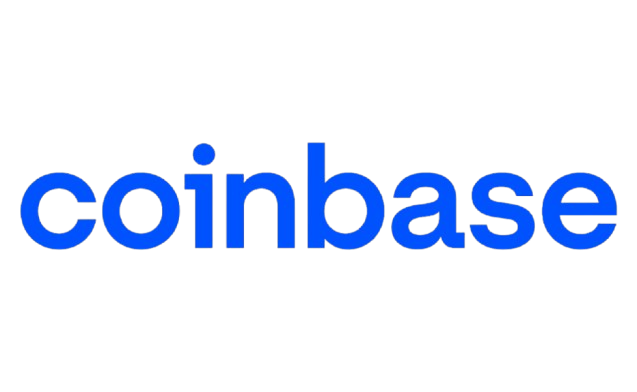Instantly calculate
ROI, Tax, and Trade Profits & Losses
Estimate profits, compare strategies, and calculate your real gains
from crypto trading – no signup required.
How to Use This Crypto Profit Calculator? (Quick Step-By-Step Guide)
Use the crypto profit calculator to calculate your gains or losses
from crypto trades instantly. Whether you're buying Bitcoin, Ethereum,
or meme coins, simply input:
Input your investment amount
Enter the amount you invested or plan to invest
Input your sell price or target price
Set your entry price and target sell price
Add your investment amount
Include any fees or additional costs
View instant output: ROI, Profit/Loss, and Net Return
Get comprehensive results instantly
Additional Strategy Tools
Average Buying Price Calculator
This tool helps you determine the weighted average cost of your
crypto holdings, especially useful when you've bought at different
prices over time.
Pro Tip: Buying during dips can significantly
lower your average entry, helping you reach breakeven faster.
Sell Target Calculator
Want to lock in profits with precision? Enter your desired ROI
percentage and the calculator gives you the exact sell price you
should target.
Tip: Cross-check your calculated sell price with
key resistance levels like Fibonacci extensions or previous swing
highs.
The tool automatically calculates:
- Total Profit/Loss
- ROI %
- Net Profit after Fees and Tax
Compare Strategies – HODL vs Trading vs Signals
Not sure which approach brings better returns? Run comparisons:
| Strategy |
Investment |
Return |
Notes |
| HODLing |
$1,000 |
$2,400 |
Based on a 1-year holding |
| Scalping (via signals) |
$1,000 |
$3,800 |
Active trading using BullCryptoSignals |
| Meme Coin Flips |
$1,000 |
$6,200 |
High-risk, high-reward |
Want better entries and exits? Try our real-time
trading signals for spot, scalping, and meme coins.
🔍 Supports: Bitcoin (BTC), Ethereum (ETH), and all
major cryptocurrencies.
Want more insider trading insights?
Join Our Crypto Signals Newsletter →
Capture weekly market updates and trading tips. No spam.
(Place just below subheadline—light, zero-commitment ask)
Trading Strategies to Analyze
1. HODLing
What It Is: "Hold On for Dear Life": buy and retain
a cryptocurrency for months or years, regardless of short-term
volatility.
How It Works
-
Asset Selection: Focus on top-tier coins (e.g.,
Bitcoin, Ethereum) or blue-chip projects with strong fundamentals
(development activity, network adoption).
-
Entry Point: Deploy capital on market dips,
technical support levels, or after meaningful on-chain milestones
(e.g., major upgrades, ETF approvals).
-
Patience & Discipline: Ignore daily price swings.
Rebalance periodically (e.g., dollar-cost average into positions
on a fixed schedule).
-
Take-Profit Zones: Identify macro targets (e.g.,
previous all-time highs, Fibonacci extensions) and either sell
gradually or accumulate alternate assets.
Pros
- Minimal time commitment
- Captures long-term network growth and compounding
- Simplifies tax/event tracking
Cons
- Opportunity cost if markets rally elsewhere
- Emotional stress during major drawdowns
Best For: Buy-and-hold investors bullish on
crypto's multi-year adoption story.
2. Scalping
What It Is: Ultra-short-term trades executed over
seconds to minutes, aiming for small price differentials dozens of
times per day.
How It Works
-
High-Speed Platform: Use low-latency exchanges
(Binance, Bybit) and hotkey-enabled UIs or bots.
-
Chart Timeframes: Monitor 1- to 5-minute candles;
set up level-2 order-book depth windows.
-
Tight Targets & Stops: Seek 0.05–0.5% gains per
trade; cap losses at 0.1–0.3%.
-
Liquidity Pairs: Focus on BTC/USDT or ETH/USDT to
minimize slippage.
-
Signal Integration: Lean on our Scalping Signals
for pre-filtered setups with entry, stop-loss, and take-profit
levels.
Pros
- Potential for steady daily returns
- Minimal overnight risk
Cons
- High transaction and funding fees
- Demands constant attention and discipline
Best For: Active traders with time to monitor
screens prefer frequent, small wins over long holds.
3. Meme Coin Trading
What It Is: Speculative flips of community-driven
tokens (e.g., PEPE, BONK) based on social hype, influencer
campaigns, and short-lived on-chain momentum.
How It Works
-
Social Pulse Monitoring: Track Twitter/X spikes,
Discord leaks, TikTok virality—use tools like LunarCrush.
-
On-Chain Alerts: Watch for sudden whale
accumulation or liquidity pool inflows on Solscan/Etherscan.
-
Rapid Entry & Exit: Set limit orders at pre-pump
volume lows; book profits at social sentiment reversals or
sell-wall formations.
-
Risk Controls: Risk ≤ 1% of portfolio per trade;
use tight stop-losses just beneath liquidity locks.
-
Multi-Chain Coverage: Our Meme Coin Signals span
Solana, BNB, Arbitrum, and Base for earliest alerts.
Pros
- Potential for 10×–100× moves in hours
- Low capital requirement for big percentage gains
Cons
- Rug-pull, honeypot, and pump-and-dump risks
- Highly unpredictable; insider advantage
Best For: Speculators who can stomach extreme
volatility and have robust scam-detection processes.
4. Spot Trading
What It Is: Buying and selling actual crypto assets
on spot markets, holding positions from minutes up to weeks, based
on technical and fundamental analysis.
How It Works
-
Technical Frameworks: Combine RSI, MA crossovers,
and Bollinger Bands for trend and reversal signals.
-
On-Chain & Sentiment Inputs: Factor in MVRV
ratio, exchange net flows, and Twitter sentiment scores.
-
Position Sizing & Risk: Risk ≤ 2% of equity per
trade; define both SL and take-profit targets.
-
Time Horizons: Day Trades: Close within 24 hrs,
Swing Trades: Hold 2–7 days
-
Signal Support: Leverage our Spot Signals for
clear entry zones, multi-leg targets, and stops.
Pros
- No liquidation risk
- Flexibility to ride both trends and counterswings
Cons
- Funding costs if holding overnight (for margin)
- Requires multi-layer analysis
Best For: Traders seeking a balance between
scalping's speed and HODL's patience, with clear risk parameters.
5. Leverage Trades
What It Is: Using borrowed capital to amplify
position size (2×–100×), magnifying both gains and losses.
How It Works
-
Margin Account Setup: Enable leverage via
derivatives (perpetual futures) or margin on exchanges like Bybit
and OKX.
-
Leverage Selection: When new, choose conservative
(2×–5×) or aggressive (>10×) for ultra-short plays.
-
Risk Management: Use micro-position sizing, Set
immediate stop-loss orders, Monitor funding rates and liquidation
prices closely.
-
Trade Types: Long: Amplify bullish moves, Short:
Profit from downtrends
Pros
- Exponential profit potential on small moves
- Ability to hedge other portfolio positions
Cons
- High risk of rapid liquidation
- Funding and rollover fees
Best For: Experienced traders with strict risk
controls, using leverage sparingly for defined setups rather than as
a primary method.
Tailored signal services from BullCryptoSignals support each strategy.
Get More From Your Trades – Try BullCryptoSignals
Want better signals and trade ideas to boost those profits?
Choose from Spot, Scalping, or Meme Coin signals. Get real-time alerts
on Telegram.
Signal Plans That Fit Every Style
Scalping Signals
For traders who like quick entries & exits
Meme Coin Signals
Catch the next DOGE or PEPE before the crowd
Spot Signals
Swing trades and long-term entries with context
All-Access Bundle
Get access to all our signal streams for the best value
Frequently Asked Questions
1. What is a crypto profit calculator, and how does it work?
A crypto profit calculator is an online tool that lets you plug in
your initial investment, buy and sell prices, and any trading fees
to see your net gain or loss. It applies the formula:
(Initial Investment – Entry Fee) × (Sell Price / Buy Price) –
Initial Investment – Exit Fee
2. Can I use this for meme coins or altcoins?
Absolutely. Choose any listed coin, including BTC, ETH, DOGE, SHIB,
and more.
3. How accurate is the tool?
It provides accurate real-time outputs based on your inputs. For
final tax reporting, consult a tax advisor.
4. Can I use this to test trading strategies?
Yes! Simulate scenarios for scalping, HODLing, or signal-based
entries to compare outcomes.
5. Can this be used for leverage trades?
You can simulate leverage by multiplying the ROI manually. (e.g., 5x
leverage on 10% move = 50% profit.)
6. Will there be more features added to this crypto tool?
Yes! We are constantly updating the tool. Subscribe to our mailing
list for updates.
7. How can I track crypto profits in real time?
By linking your exchange account or wallet through API credentials,
the calculator fetches live market prices and executed fills,
updating your profits continuously. This way, you never miss a
fleeting scalp or swing opportunity and always know your
up-to-the-second P&L.
8. When should I take profits from my crypto positions?
A common approach is to sell portions of your holdings at predefined
profit tiers—often at 20%–25% gains—to lock in returns while still
riding potential further upside. Incremental exits help balance
realized profits against continued market exposure.
9. What strategies can optimize crypto profit-taking?
Tactics range from dollar-cost-averaging out of positions to
technical exits on signals like overbought RSI or bearish chart
patterns. More aggressive traders might layer scaled stop-loss
orders and use leverage, but they should carefully manage the
increased risk through strict size limits and risk











